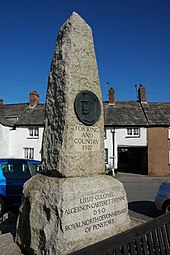
Sir Philip Carteret, 2nd Baronet, also known as Philippe de Carteret IV, was the 5th Seigneur of Sark from 1663 to 1693.

Thomas Thynne, 1st Marquess of Bath, KG, PC, of Longleat in Wiltshire, was a British politician who held office under King George III. He served as Southern Secretary, Northern Secretary and Lord Lieutenant of Ireland. Between 1751 and 1789, he was known as the 3rd Viscount Weymouth. He is possibly best known for his role in the Falklands Crisis of 1770.
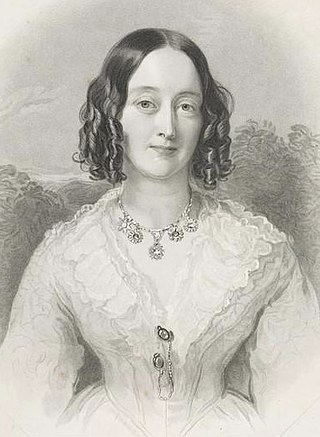
Charlotte Anne Montagu Douglas Scott, Duchess of Buccleuch and Queensberry, VA was a British peeress. A daughter of Thomas Thynne, 2nd Marquess of Bath, Charlotte married Walter Montagu Douglas Scott, 5th Duke of Buccleuch in 1829. They had seven children, including William Montagu Douglas Scott, 6th Duke of Buccleuch; Henry Douglas-Scott-Montagu, 1st Baron Montagu of Beaulieu; and the Royal Navy admiral Lord Charles Montagu Douglas Scott.

Thomas Henry Thynne, 5th Marquess of Bath, styled Viscount Weymouth until 1896, was a British landowner and Conservative politician. He held ministerial office as Under-Secretary of State for India in 1905 and Master of the Horse between 1922 and 1924. He was also involved in local politics and served as Chairman of Wiltshire County Council between 1906 and his death in 1946.
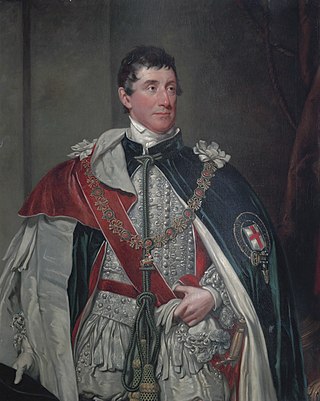
Thomas Thynne, 2nd Marquess of Bath KG, styled Viscount Weymouth from 1789 until 1796, was a British peer.

Baron Carteret is a title that has been created twice in British history, once in the Peerage of England and once in the Peerage of Great Britain. The first creation came into the Peerage of England in 1681 when the fourteen-year-old Sir George Carteret, 2nd Baronet, was made Baron Carteret, of Hawnes in the County of Bedford. The peerage was originally proposed for his grandfather Sir George Carteret, 1st Baronet, a celebrated royalist statesman, but he died before he was granted the title and as his eldest son, Philip, predeceased him, it was eventually bestowed on his grandson, George, with remainder to the latter's brothers. The Baronetcy, of Metesches in the Island of Jersey, had been created for George Carteret in the Baronetage of England on 9 May 1645. Lord Carteret married Lady Grace Granville, daughter of John Granville, 1st Earl of Bath. In 1715 Lady Grace was raised to the Peerage of Great Britain in her own right as Viscountess Carteret and Countess Granville. Lord Carteret and Lady Granville were both succeeded by their son John Carteret, the second Baron and second Earl. The titles became extinct on the death of the latter's son Robert Carteret, the third Earl, in 1776.
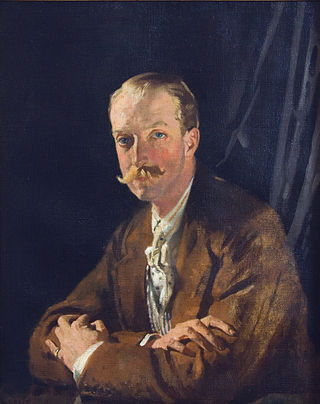
Geoffrey Thomas Taylour, 4th Marquess of Headfort DL, JP, FZS, styled Lord Geoffrey Taylour until 1893 and Earl of Bective between 1893 and 1894, was a British politician and Army officer.

John Henry Crichton, 4th Earl Erne,, styled Viscount Crichton from 1842 to 1885, was an Anglo-Irish peer and Conservative politician.
John Harbord, 8th Baron Suffield, of Gunton Park, near Norwich, Norfolk, was a British soldier, peer, and baronet, a member of the House of Lords from 1943 to 1945.
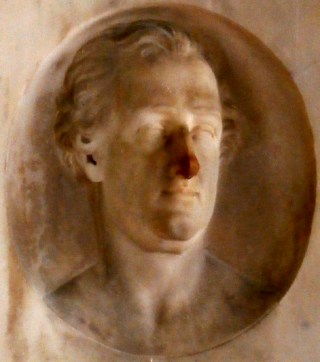
Henry Frederick Carteret, 1st Baron Carteret PC (1735–1826), of Haynes, Bedfordshire, was Member of Parliament for Staffordshire (1757–1761), for Weobley in Herefordshire (1761–1770) and was Master of the Household to King George III 1768–1771. He was hereditary Bailiff of Jersey 1776–1826.

Thomas Taylour, 3rd Marquess of Headfort KP PC (I) was an Irish peer, styled Lord Kenlis until 1829 and Earl of Bective from 1829 to 1870.

Thomas Thynne, 2nd Viscount Weymouth of Longleat House in Wiltshire was an English peer, descended from Sir John Thynne (c.1515-1580) builder of Longleat.
John Thynne, 3rd Baron Carteret PC, known as Lord John Thynne between 1789 and 1838, was a British peer and politician.
George Thynne, 2nd Baron Carteret PC, styled Lord George Thynne between 1789 and 1826, was a British Tory politician.
The Royal North Devon Yeomanry was a Yeomanry regiment of the British Army. First raised in 1798, it participated in the Second Boer War and the First World War before being amalgamated with the Royal 1st Devon Yeomanry in 1920 to form the Royal Devon Yeomanry.
Colonel Ulric Oliver Thynne CMG, DSO, CVO was a distinguished British soldier and champion polo player.
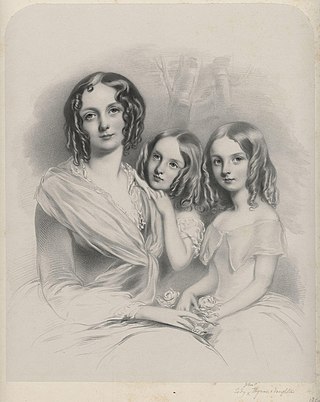
Anna Constantia Thynne, Lady John Thynne was a British marine zoologist. In 1846, she built the first stable and sustained marine aquarium and maintained corals and sponges in it for over three years.

Stowe House in the parish of Kilkhampton in Cornwall, England, UK, was a mansion built in 1679 by John Grenville, 1st Earl of Bath (1628–1701) and demolished in 1739. The Grenville family were for many centuries lords of the manor of Kilkhampton, which they held from the feudal barony of Gloucester, as they did their other principal seat of nearby Bideford in Devon. It is possible that the family's original residence at Kilkhampton was Kilkhampton Castle, of which only the groundworks survive, unusual in that it had a motte with two baileys.
Elizabeth Thynne, Marchioness of Bath, was a British courtier and the wife of Thomas Thynne, 1st Marquess of Bath. From 1761 to 1793, she was a Lady of the Bedchamber to Charlotte of Mecklenburg-Strelitz, queen consort of King George III of the United Kingdom. In 1793, as Dowager Marchioness, she became Mistress of the Robes and held that position until the Queen's death in 1818.

Haynes Park is a Georgian country house which stands in parkland at Haynes Church End, Bedfordshire, England. It is a Grade I listed building.


